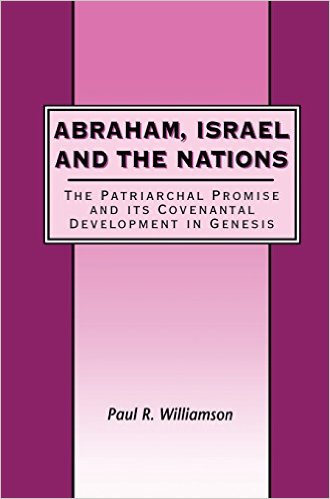This book is excellent. And I couldn’t have found it at a better time. It is dedicated almost entirely to an analysis between the covenant instituted in Genesis 15 (well, 12 really) and contrasting that with Genesis 17. The question that has arisen historically is if 15 is a different covenant than 17. There are a spectrum of ideas; from Augustine (the first patristic to really address the issue) to Luther (who held the opposite view of Augustine).
My study group is still working on the topic of covenant and Covenant Theology. The implications of how one understands the relation of Genesis 15 and 17 is profound.
Some questions the book has not yet addressed, though I hope will be, are primarily this:
1) If Genesis 17 is a distinct covenant, then what is its relation to the covenant in 15?
2) In what way would Gen. 15 and 17 be related to the New Covenant?
3) What parallels exist between circumcision (Gen 17) and baptism *if* Gen 17 is not part of the covenant instituted in Gen 15?
Here are some helpful quotes which will provide for interesting talking points in our next study:
The strongest argument for a source-critical analysis of these chapters (Gen. 15 and 17) in terms of their distinctive vocabulary relates to the covenant terminology that each pericope employs. Here source criticism has highlighted a significant fact: whereas the idiom of ‘cutting a covenant’ is deployed in Genesis 15, the terminology used in Genesis 17 is that of ‘giving’ and ‘establishing’ a covenant.
It is true that a ritual of cutting is commanded by God in both chapters, yet this ritual is not only completely different, but also serves an entirely different purpose. In Genesis 15 Abraham is instructed to perform a ritual cutting of animals for the purpose of covenant ratification. In Genesis 17 the cutting of the foreskin is portrayed as a mark or sign of the covenant, but there is no explicit association with covenant ratification. These striking differences cannot simply be ignored by those wishing to treat these as parallel accounts. One account is absolutely silent on the archaic covenant ratification rite, whereas the other is equally silent on the distinguishing covenant mark or seal in human flesh.
Regardless of how the precise details of the animal rite in Genesis 15 and its significance are understood, scholars agree that the obligation of keeping this covenant is placed solely on God. No obligations, either implicitly or explicitly, are placed upon Abraham as far as this covenant is concerned. By passing between the pieces, God (represented by the smoking fire pot and flaming torch) obligates himself to keep this covenant. In contrast, Abraham is presented in this passage as little more than a passive spectator to this rite of covenant ratification.
The covenant spoken of in ch. 17 differs in that it is plainly obligatory, depending on Abraham’s continuing obedience to God. This conditional aspect is reflected both in how the covenant is introduced in ch. 17, ‘Behave in an exemplary fashion so that I may establish my covenant with both you and your descendants, and greatly increase your numbers’ (17.1, 2, my translation), and in the emphasis within this chapter on the duty of circumcision as the means by which Abraham and his ‘seed’ were instructed to keep this covenant (cf. vv. 9-14, 23- 27).
In that these new names are given covenantal significance in ch. 17, their non-introduction in ch. 15 would imply that the covenant recorded there served a different purpose—or at least had a distinct emphasis. Again, this inference is confirmed by a careful analysis of each chapter. Genesis 15 stresses Abraham’s role as the progenitor of a single nation who would inherit the Promised Land, whereas Genesis 17 stresses Abraham’s role as the ‘father’ of a multitude of nations who would inherit the promised blessing (cf. 17.4-6, 16). Thus the name- changes in ch. 17 subtly alert the reader to the fact that the scope of the two covenant passages in the Abrahamic narrative is not the same.
A close examination of the structure of the two chapters further suggests that rather than being a ‘reworking’ of ch. 15, ch. 17 serves an entirely different purpose in the mind of the compiler. Chapter 15 is structured around the promise of nationhood (descendants and land) sealed by an unconditional covenant given to believing Abraham. In contrast, ch. 17 is arranged around the themes of Abraham’s ‘progeny’ and the covenant sign of circumcision.

